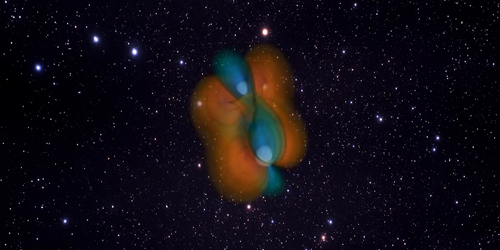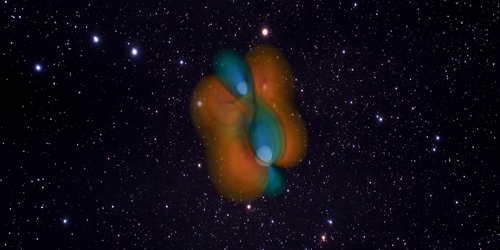Turning up the Ringdown
Do black holes have “hair,” that is, distinguishing traits other than their mass, spin, and charge? That’s a question researchers have struggled to answer, owing to lack of data. A negative answer would mean that general relativity, which predicts “bald” black holes, can describe gravity even in the less-tested, strong-field regime. Huan Yang from Princeton University, New Jersey, and colleagues propose a new way to test this prediction that entails adding up gravitational-wave signals from a set of black hole mergers.
The merger of two black holes generates gravitational waves before, during, and after the merger. If the resulting black hole has no hair, its mass, spin, and charge should uniquely determine the frequency and phase of the many modes that make up the gravitational-wave signal from the postmerger, or “ringdown,” phase of the event. Measurement of these ringdown modes would thus provide a means to test a black hole’s baldness. But current ringdown data from individual events are restricted to the “loudest” mode and have a too-low signal-to-noise ratio to provide a definitive test.
Yang and co-workers’ proposal involves searching for a given secondary mode, say the next loudest mode, in a collection of events and adding up all ringdown signals, after their frequencies and phases are aligned. With enough ringdown signals, this approach yields a collective secondary mode with a signal-to-noise ratio that is sufficient to perform the test. The researchers reckon that advanced-era gravitational-wave detectors such as Advanced LIGO running at full sensitivity could measure these collective secondary modes using data collected over a period of a year.
This research is published in Physical Review Letters.
–Ana Lopes
Ana Lopes is a Senior Editor of Physics.





